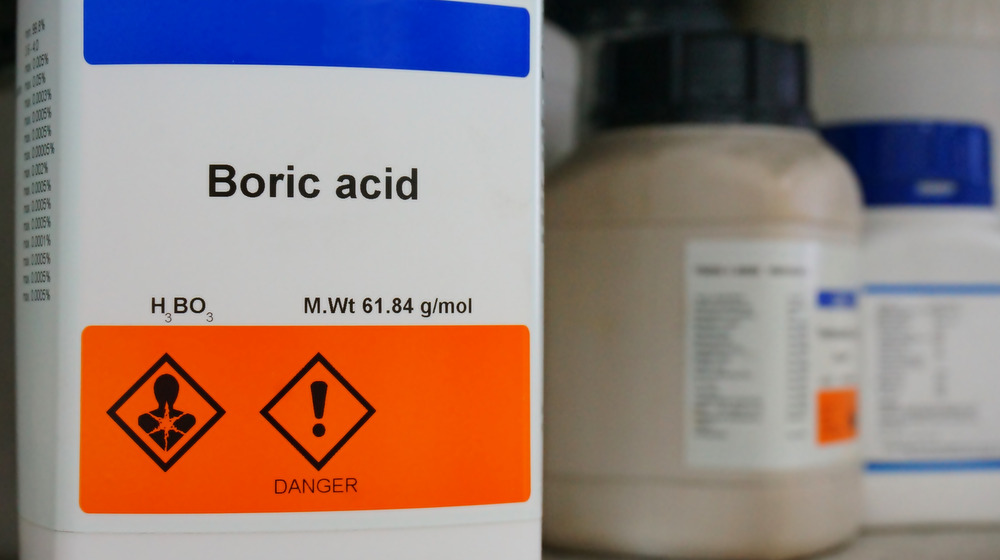Read This Before Using Boric Acid
Boric acid is a compound that has been around for decades, and it has a myriad of uses that include detergents, pesticides, and even the treatment of yeast infections. Yet it is a known toxin that can be harmful to humans if handled incorrectly. So, what is the truth behind this multipurpose chemical?
The compound exists naturally in rocks, soil and even water. It can be used as granules, pellets, liquids, gels, or powders, and it has appeared in dozens of products in the United States since 1948. One of the more common uses for boric acid is as a pesticide because the powder kills insects when they ingest it. The compound also helps control mold and fungi because it dries them out and stops reproduction. Boric acid is also used as a cleaning agent in a number of soaps and detergents in homes and hospitals alike (via National Pesticide Information Center).
It Can Treat Yeast Infections
It is the antifungal and antiviral abilities of boric acid that make it an option for treating vulvovaginal candidiasis and bacterial vaginosis — infections caused by an overgrowth of bacteria in the vagina. Boric acid, used in a suppository form, works by restoring the proper acid balance in the vagina.
Research from a study published in the Journal of Women's Health showed boric acid was a safe option for women to treat vulvovaginal candidiasis. The cure rate varied from 40 to 100 percent with none of the studies showing a major difference in infection rates (via Healthline). Another study showed that it was more than 75 percent effective in treating bacterial vaginosis (via Health).
While boric acid has many uses, it should never be taken orally, as it is considered a poison (via Medline Plus). It should also never be applied to an open wound or used where broken skin is present.


